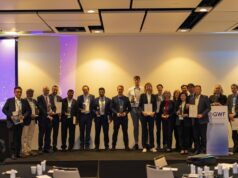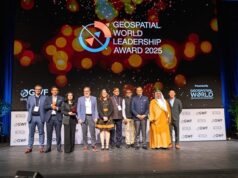Students at Tanjong Katong Secondary School in Singapore recently conducted a study on tectonic hazards caused by volcanoes around the world. Remarkably, they were able to complete this activity without even opening a textbook, instead, opting to use a smart map.
In an effort to promote learning and increase student engagement, two local schools – Yishun Secondary and Tanjong Katong Secondary – have adopted Geographic Information System (GIS) technology, otherwise known as smart mapping, as an effective educational tool.
To date, teachers using this technology have observed learning outcomes such as increased classroom engagement, greater accountability, enhanced creative thinking, and improved observation, reasoning, and collaborative skills.
“Singapore’s youth is very creative and receptive when it comes to new technologies,” Esri Singapore CEO Thomas Pramotedham said.
“By teaching them how it can applied to their daily lives enables us to not only give them a better understanding of their world, but also help them explore new ways on how they can make our world a better place to live in,” he said.
Harnessing technology to facilitate creative thinking, collaboration and the development of ideas in classrooms is high on the agenda for educators in Asia. This was highlighted recently in Singapore at the fifth International Conference on Teaching and Learning with Technology (ICTLT), by Acting Education Minister for Schools, Ng Chee Meng. The government’s vision is to seamlessly embed technology into all classrooms for student-centric learning in years to come.
Smart mapping technology has become a valuable instrument in teaching, and a supplement for STEM (science, technology, engineering and mathematics) subjects. When taking a spatial problem-solving approach, students can ask a question or identify a problem, combine information from different sources, perform a sequence of spatial operations, and obtain results that help them answer their question or gain new insights.
“Through these powerful developments in education and technology, children are learning to work in teams, work on projects, collaborate, think outside-of-the-box and become creative,” said Michael Gould, education manager at Esri Inc.
“The ability for a non-traditional learning tool to achieve all that amazes many teachers and even parents,” he added.
In an enquiry-based exercise conducted by students at Tanjong Katong Secondary School, the students used smart mapping technology to study eight volcanoes located around the world and explored the risks faced in areas with tectonic hazards.
They also sought to understand how the type of lava and type of volcanic eruptions have affected the shape, size, and formation of volcanoes. The technology enabled students to easily make these comparisons by leveraging dynamic digital maps.
The analysis derived from this study allowed students to draw links and relate it to their previous geography lessons. In addition, this experience also enabled teachers to explore more ways to create student-centric experiences in the classroom.
Examples beyond geography
Apart from using smart mapping technology in the field of geography, the technology has also been used in archaeology, dance, sports and even the arts.
For example, at the Ohio State University, choreographers digitise dance performances using video cameras and motion tracking tools. Smart mapping technology is then used to analyse the dance routine across space and time.
A choreographer can examine any single part of the routine by viewing the configuration as coloured dots on the stage. The composer can use the actual movement of the dancers to create, queue and compose the lighting and music for the performance.
The same process can also be used by coaches of sports teams who need to refine game strategy in real-time.
“Such creative applications of smart mapping technology in the classroom only proves that location is a big part of our lives, and having a spatial thinking mindset allows us to stretch our imagination and explore how we can contribute to our community,” Mr Pramotedham said.
For further information on the use of GIS in the education sector, visit esrisingapore.com.sg.
“




